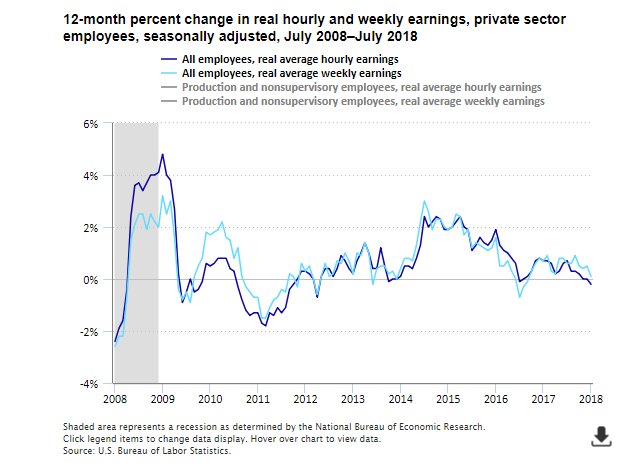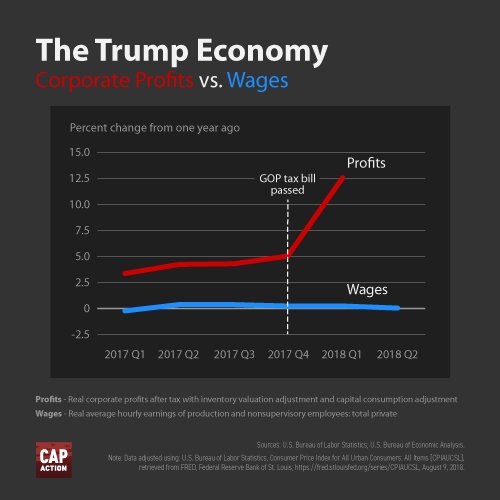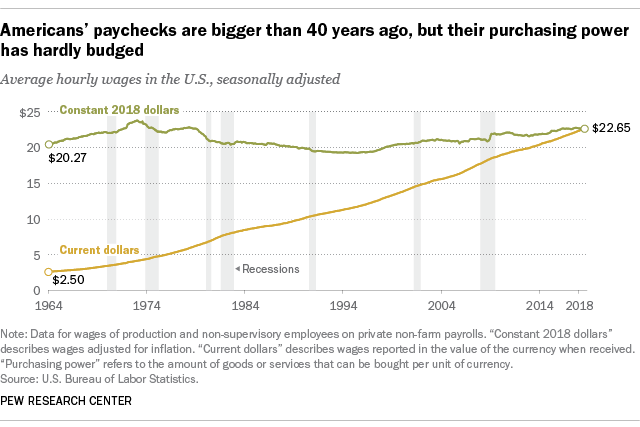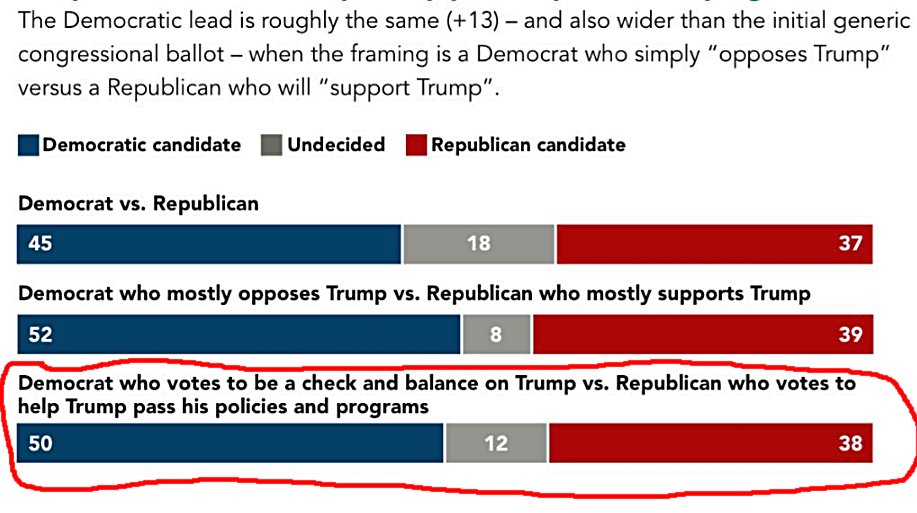Americans work too hard and make too little — and Republicans want to keep it that way
You’ve probably seen this chart that shows that when adjusted for inflation, wages are down since July of last year:

Despite the strength of the economy Trump inherited, most of the growth — like most of the tax cuts Republicans passed — is going to the rich and their corporations.
Nick Hanauer writing in Politico makes the case that Democrats need to redefine centrism as policies that not only have the support of most Americas but also affect most Americans. He uses the minimum wage as example of a policy that becomes more centrist as it goes up because it most Americans earn under $18 dollars an hour.
Reading it, I was stuck — again, as I always am — by how effectively Republican have been able to make policies that almost exclusively benefit the rich and corporations popular and mainstream though they benefit a statistically tiny group of Americans.

To put a fine point on this, Hanauer writes, “92 percent of the profits that American businesses make this year will be spent on enriching the small, elite fraction of the population that owns significant amounts of corporate stock. Meanwhile, at a time of so-called ‘full employment,’ inflation-adjusted wages for the bottom 80 percent of American workers are actually declining.”
And this isn’t a new trend, seasonally adjusted average hourly wages in real dollars are basically stuck where they were in 1964:

“After the corporate elite slices off its giant share of the income pie, the median American family… is left with about $59,000 a year. Had inequality held constant since 1980, that figure would be $86,000. Had middle-class incomes grown with productivity (as they had in the previous three decades), the median American family would be earning over $100,000 a year.”
Hanauer adds: “Let me underscore this point: America owes the median family a raise of somewhere between $25,000 and $40,000. Per year.”
We’ve seen what happens when we have a party that exclusively champions the rich while shrouding their agenda in flags of resentment: Record corporate profits and trillion-dollar giveaways.
And you’ve probably seen the New York Times story that notes that while you and most voters don’t want to hear about this obvious tax scam, GOP donors love these policies they’re willing to spend a fraction of the billions in tax breaks they raked in to make sure the GOP keeps the House and shields not only the Trump administration but also polluters, profiteers, defense contractors and financial predators of all sort from any real oversight.
The gut-evacuating thing is that this might work.
As Dave Weigel noted, the story of Republicans going eight of nine in special elections since 2016 seems like a success for the GOP. That’s until you realize it was really a massive win for Citizens United. These Safe R were districts picked because they should have been won easily by the party, which generally only was able to hold them because the unlimited, anonymous donations legalized by Citizens United and related decisions allowed GOP-aligned Super PACs to flush millions of dollars into these districts.
Tens of millions of dollars more are flooding into the November elections and the question is whether this will help save a majority that is already largely insulated from reality by gerrymandering.
There’s no doubt that running on being the party that checks Trump is right move in 2018, politically and morally:

But Republicans have successfully made their brand synonymous with one fiscal policy that is completely symbiotic with their donor base — lower taxes.
Now that voters have seen this policy fail for the trillionth time, they want to turn to Democrats and Democrats need to offer their own brand identity. “For the people” or “Better Way” are probably all good enough facing the least popular and most comprised new president in polling history but the brand needs a counter to the GOP that appeals to the small-donor base that is exploding and the only hope of staying competitive against the small group of extraordinarily rich men keeping the GOP afloat.
“Higher wages” as a Democratic brand promise is not just the natural solution. It’s the only solution. It connects work with health care with consumer protection with education. This naturally puts the party at odds with the donors who’ve spent billions trying to crush it anyway. So that changes nothing. And it’s the most obvious differentiator with a GOP that wants to eliminate the federal minimum wage — a genuinely fringe position that polls below mandatory herpes.
Elizabeth Warren sees this when she proposes the most innovative reshaping of corporate governance in favor of workers since the New Deal. Justice Democrats like Abdul El-Sayed and Alexandria Ocasio-Cortez see it when they propose Medicare for All that could save America $2 trillion and reverse the trend of almost all of American workers’ wage increases being eaten up by health care costs. And “centrists” like Gretchen Whtimer and Ralph Northam see it when they embrace a $15 dollar minimum wage, even if Hanauer is already making a compelling argument that that number should be $20 an hour.
“Higher wages” encompasses true paid leave, strengthening Social Security and programs that make work possible like child care and universal pre-K.
It focuses the debate in Saginaw and Sedona. And it forces Republicans to explain why they’re against higher wages for all Americans as corporations are raking in record profits.
It’s in an idea whose time has come, about 38 years ago. Rising, raising, going high, getting high. These are all popular things that Democrat should definitely look forward to running on in 2020.



